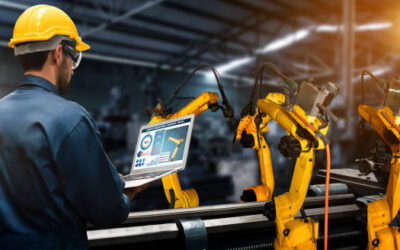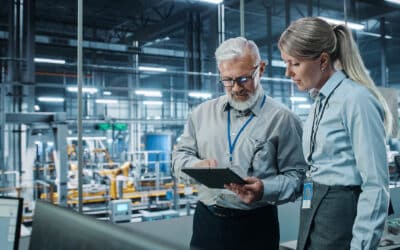What happens to your product when it leaves the warehouse? Can you see when it’s delivered to your customer? Do you know which batch was sent to which retailer? Can you tell what condition it was in when it arrived or who was responsible for it at any given time?
With so much data and technology, the ability to trace your entire supply chain from component to customer is becoming a reality for small and medium manufacturers. But making this possible in your organization means treating transportation and logistics (T&L) with the same level of attention as your manufacturing processes.
Just like how technology in the warehouse can lead to improved manufacturing operations, a good understanding of your T&L process and the technologies used by partners, third-party logistics providers, or your own in-house delivery team is crucial to ensuring the performance of your production facility.
The link between manufacturing and transportation & logistics
Understanding your entire supply chain is necessary for strategies such as just-in-time manufacturing. While highly efficient, these approaches require a high degree of visibility and transparency between multiple firms, partners, and suppliers. Disruptions caused due to T&L, either upstream or downstream, can have a significant impact on your manufacturing, while issues during production can lead to a domino effect that disrupts crucial shipments and deliveries.
Trucks, for example, carry more than $850 billion worth of Canadian goods, much of which is produced by small and medium manufacturers. However, the industry is facing a prolonged shortage of drivers, with more than 25,000 positions expected to be vacant in the next 3-5 years. This shortage, which is not directly related to production, will lead to increased shipping costs, longer delivery times, and availability issues that could have a significant impact on your performance.
Similarly, many T&L providers lack insight into customer demand. As a result, they are in a constant state of reaction, scrambling to find trucks and workers during peaks while having them sitting idle during slow periods. By integrating systems, software, and technologies with these partners, you can share demand forecasts and communicate about upcoming promotions or seasonal spikes to ensure resources are available when you need them.
The technologies driving transportation & logistics forward
In response to these and other challenges many T&L providers are embracing new technology and improving their services. With the increasing accessibility and affordability of technologies such as the Industrial Internet of Things (IIoT), digital workforce tools, advanced analytics, and machine learning, companies are finding the business cases to implement and embrace new solutions.
Until recently, for example, many companies were still using paper records and signatures when tracking shipments. With the widespread availability of digital solutions and software, as well as the sudden demand for contactless systems in response to the COVID-19 pandemic, many have finally embraced these systems for signatures, shipment location tracking, and chain of ownership applications. These seemingly minor implementations can lead to big improvements for manufacturers who are able to integrate with these systems.
Another technology that will reshape T&L is autonomous vehicles. While we’re still decades away from truly driverless trucks roaming the streets and delivering shipments on their own, the technology will soon make it possible to reduce driver fatigue, strain, and workload.
Like a plane’s autopilot, drivers can take control in cities, congested areas, or in case of emergency while the vehicle will be able to drive itself on highways or other stretches of open road. In the medium term, trucks are expected to operate in convoys, with one driver in the lead vehicle guiding multiple trucks to their destination.
This is a great example of how technology is a long way from replacing workers altogether. Instead, autonomous vehicles will help make their jobs better while offsetting the shortage of drivers.
Finally, data, analytics, and artificial intelligence (AI) will also play an increasing role in T&L. Collecting, storing, analyzing, and using the vast amount of data from thousands of deliveries will provide increased visibility, traceability, and transparency to both customers and manufacturers. Companies are already using AI powered software to analyze and predict the most efficient routes, cutting down on cost, time, and emissions.
Paired with digital twin technology, manufacturers can use this data to replicate their entire supply chain. Within the software they can make predictions, test new approaches, evaluate potential investments, and see how changes or issues in one area impact other processes up and down the line.
Transportation & logistics is part of the manufacturing process
While it may feel like a world away from the factory floor, transportation and logistics is a key part of your manufacturing process and one that has the potential to impact your business results and overall customer experience.
If you’ve invested the time, money, and resources into making your manufacturing processes better with technology, you should also understand and consider how the technology of your T&L partner will fit into these systems. Even if you’re not fully in control of T&L, viewing it as part of your process will allow you to see how it helps or hinders your business, production processes, and performance.



